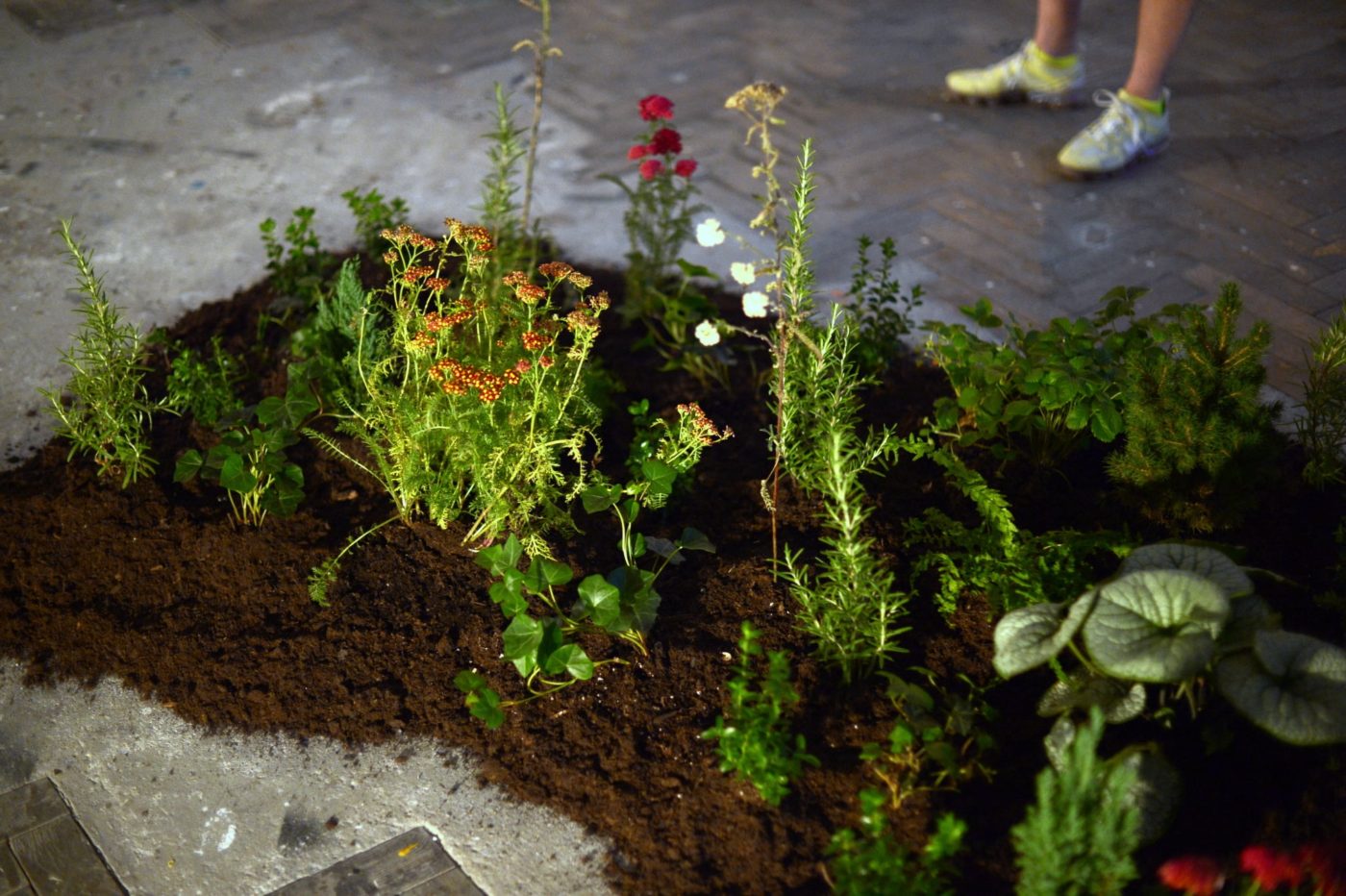(b. 1991, lives in Wrocław) is a graduate of the Eugeniusz Geppert Academy of Fine Arts in Wrocław, DFA student at the Academy of Fine Arts in Kraków. Co-founder and member of the Wykwitex art group, Dobecka is an author of paintings, sculptures, and installations. Her works process collective emotions related to gender roles, media manipulation, capitalist dreams, and the climate catastrophe. Her projects often animate a community based on mutual care and ecological sensitivity.

Mourning Garden, 2021/2022, site-specific garden, courtesy of the artist
Plants in the garden symbolically refer to the mourning process. Literature and old songs mention them many times. Some of the herbs growing there have healing properties that, according to herbal handbooks, help to release emotions.
Many people, after losing a loved one, indicate contact with nature as very significant, even therapeutic. By questioning the traditional cemetery or the cold, dark, and heavy tombstone as a form of commemoration, I wanted to create a place that would be an affirmation of life and the accompanying processes. This is how the idea for the garden was born. I would like it to be a quiet, reflective, soothing place, where plants can grow in favourable conditions and anyone who feels the need to visit it can do so.
The garden consists of:
Rosemary – evergreen, symbolizes eternal life, but also memory. Prefers moist ground which is identified with the underworld and the world of the dead.
Yarrow – according to legend, Achilles, a mythical Greek hero, used yarrow to cleanse and heal his and his soldiers’ wounds during the Battle of Troy. It is for this reason that this plant got the Latin name Achillea. It is therefore a herb that heals wounds first and foremost. It also has a diastolic, anti-inflammatory and pain-relieving effect.
Wild strawberries – symbolize immortality and innocence, are believed to ensure eternal happiness after death.
Cypress – the ancient Romans considered it a symbol of mourning, and its branches were used during funerals. In turn, among other civilizations, as an evergreen and long-lived plant, it was considered a symbol of immortality and long life. In ancient China, it was believed that eating cypress seeds provided longevity.
Spruce – Central European tribes believed that spruce chases away evil spirits and disenchants charms.
Ivy – evergreen, in heraldry symbolizes friendship, attachment, lasting memory; a symbol of a passing life and a popular graveyard plant.
Fern – evergreen, grows in shaded places, thanks to which it is considered a mediating plant that lives on the border of the world of the living and the dead; believed to protect against demons.
Boxwood – evergreen, symbolizes eternal life.
Maple – symbolizes the life cycle “from cradle to coffin,” both of these items were once made of maple wood; it protects against evil spirits.
Violet – has a relaxing, analgesic and anti-inflammatory effect; symbolizes modesty, innocence, honesty, truth, mystery, beauty, love, but also memory and care.
Marigold – in Mexican culture it is a flower symbolizing death and the dead; according to local beliefs, it summons the souls of the dead.
Wormwood – a symbol of bitterness. It was used to decorate the dead and coffins. The houses of the dead were also incensed with it after the bodies had been removed so that “you would not smell the corpse.” Wormwood leaves were drunk as a tincture (absinthe) or smoked to cause mild psychedelic effects.
Chrysanthemum – in Poland it is a symbol of mourning and death; in Chinese, Japanese or Korean culture, it symbolizes happiness and long life. As a symbol of the Sun (due to the radiant arrangement of the petals), it is supposed to bring joy and serenity.
Willow – in folk culture perceived as a magical tree, evoking happiness, fertility, health and vitality. It is known especially for its antibacterial, anti-inflammatory, antipyretic, and analgesic properties. The properties attributed to willows largely coincide with the realm of Veles – the god of the underworld and the vegetation cycle, whose cult in the Slavic region was later identified with the devil.
[text by Jagoda Dobecka]
Venue
lawn in front of the Museum Ziemi Lubuskiej building at al. Niepodległości 15












